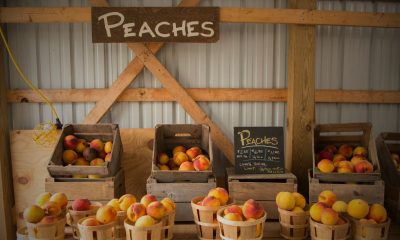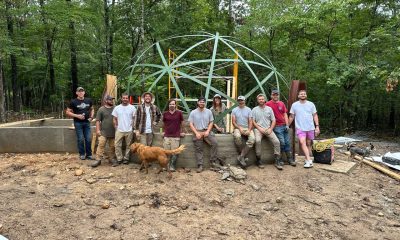Business
Not Every Seed Sprouts

Many years ago, when I was a young kid fresh out of high school, I got my first full time job at one of the largest collision repair shops in the United States here in Lake Oswego, OR. I started as a Lot Attendant (a glorified car washer), and over the course of 1.5 years I worked my way up to Lot Manager. This new position had me being in charge of everything on the lot. I oversaw all of the other Lot Attendants. I was in charge of final inspection and polishing every car before it went out. I had my own bay in the shop, scheduled all customer rides after a drop off and delivered finished cars to customers, etc. I love mechanical stuff, I love cars, and I loved being able to work in a shop. I had endless amounts of fun learning from all of the mechanics and body techs, and every Friday before they left I’d give their cars a detail as a way of saying thank you. The guys at the shop loved having me there, and I started to build some great bonds with a lot of them. The work was grueling manual labor, but I was young, strong and loved it.
Fast forward to the end of my first run at this shop. Our manager moved on and we got assigned a floating corporate manager to oversee everything for a few months while we hunted for a suitable replacement. To put it bluntly, I was not a fan of his way of interacting with employees. As he quite literally arced his neck to look up to me and walked around with ILS (invisible lat syndrome), he quickly made a name for himself in the shop lunch room every day. I kept a professional attitude through the first couple of months, until he told me I needed to shave every single morning since I was driving customers around. I saw no rhyme or reason for it, as every single man who worked in the shop had a beard. I called the owner of the company and talked with him about how ridiculous of a request it was. I was fired the next day, and told I was nothing by this floating manager. This was, as one would imagine, a shock to me. Everybody was blindsided and couldn’t believe I was let go. I left on good terms with all of them, but harboring a strange feeling inside.
For the first time in my working life, I understood what it felt like to be expendable. Here I was, dragging half cuts of cars (literally half of a car, cut down the middle) across the concrete lot with 1 hand like a strongman. I streamlined the lot in numerous ways. Every shop was always clean so the bodymen and painters could work without any clutter. The shops ran like a well oiled machine under my oversight, and then it ended in a flash because I questioned authority.
A few months later I got called back after that manager had moved on, and was asked what it would take for me to work there again. I told them I’d happily come back for a $3 an hour raise, to which they immediately said yes to. They knew my worth, as did I. So, slightly apprehensive but excited to see the guys again, I returned. 3 months later, I was an hour late for work due to extenuating circumstances the night before. I hadn’t slept all night, and my alarm stood no chance after I had been up for nearly 40 hours. I was fired by the new manager over the phone when he called that morning, refusing to even talk to me about it. Once again, I had gone from a valued employee to disposable. It was at that very moment that I decided I wanted to work for myself in the future. I had no idea how I was going to go about doing that, but I knew I needed to make it a reality.
I didn’t immediately start a business. I was a young kid after all, with absolutely no idea how to even start or what I wanted to do. I ended up working a couple of other jobs over the next couple years, went to college for a few years, and aimlessly stumbled through life trying to find my purpose along the way. All the while, the notion of working for someone else in your typical corporate setting became harder and harder to stomach every time I thought about it. So, I started down the road to self employment. And boy was that a winding, wild journey.

I am a fine artist, specializing in photo realistic portrait drawings using both graphite, charcoal, and colored pencil. It is a skill that not many have, and definitely not something that comes easy to people as it did to me. Knowing that I had such a skill, I tried to start a “business” out of it. although I got many orders over the years, it was nowhere near enough to pay the bills, think about growing a family, or buying a piece of land in the future. I wanted so badly to be able to make my way in this world with my artwork, but finding people who were willing to pay a fair price for a one of a kind portrait was beyond difficult. So, I shelved that idea.

I am a moderate giant, standing nearly 6’4″ tall, and have had a full beard for many years. So my next business endeavor was to start a beard care product business. Beard balms, beard butters, beard oils, mustache waxes, handmade wooden beard combs, etc. I jumped head first into this, and actually had a fair bit of success for the first couple of months. I marketed my business like crazy on social media, designed awesome looking packaging for each product, experimented with different manly/woodsy scents that people loved, and created a whipped beard butter that hadn’t been done before. I thought this might be something that would work, but alas, competition presented itself immediately in the form of everybody around the country stealing my coveted beard butter and selling it themselves. I had not the capital or the manufacturing ability to keep up with these larger companies, and eventually the orders stopped coming in. It was an extremely fun couple of months, but I ultimately shelved that idea.
Fast forward a couple of years, and upon finding out we were expecting our first child, I decided it was time to kick it in to high gear. My next business idea was to build overlanding tow along off-road trailers. For those not familiar with these, they are all terrain camping trailers that you can tow behind your vehicle but will go many places a normal trailer would never be able to. I researched the market for months, planned out build designs, had every single piece I needed planned out and in online shopping carts ready to buy. One morning, after finalizing all parts needed online, I stood up to go use the restroom and fell into a wall. I was unable to walk for a month. After many trips to the doctor I finally landed at a chiropractor, had imaging done, and was told my spinal cord was crushed in 3 locations in my neck, I had 6 more herniated discs throughout my thoracic and lumbar spine, my vagus nerve was crushed, and I should by all accounts not be able to walk. So, I shelved that idea and spent the next 8 months learning how to walk again after that last spell of “fall into a wall”.

A year after that last adventure into wall falling, I walked out into my horribly neglected garage and just stared for what felt like hours. I had no idea what I was doing, but I knew it was time to find something that stuck. As you all probably know, I worked for the next 3 months building a proper shop in my garage. I had no idea what I was going to make, but I knew if I was to succeed I needed a workable space, so that was step 1. The rest is history, and you’ve all probably seen at least part of the journey. But even in this, there are things that didn’t go as I had planned. My first idea was to make nice cutting boards and sell them to Realtors as closing gifts for their clients. I emailed over 100 Realtors in my area. Half of them didn’t respond. The half that did didn’t even acknowledge my pitch, and simply said “are you interested in buying…?” So, that plan was out of the question. Next move was to sell at our large local farmers market. 4 months of 12 hour days every single day batching products to sell ended in a rescinded invitation due to new “pandemic rules” which cut nearly half of the market space and left myself, as well as long time vendors, high and dry. Another plan gone.
You may be wondering why I just told that long story. The reason is this. Had I given up after my first business idea failed, or my second, or my third, I never would have ended up where I am today. I have a thriving business doing something that I love, I am fortunate and blessed to be able to work from the comfort of my own home which is a huge help and relief to my wife who is mothering 2 baby girls under 2 years old currently, and I answer to no corporate entity any longer. None of that would have become a reality if I would have thrown in the towel years ago and went to find a minimum wage job. It took a tremendous amount of patience, planning, and much trial and error to find the thing that worked, but it was worth it in the end.
When you plant a garden, not every seed sprouts.
Does that mean nothing will grow in your garden? Of course not. It simply means that some seeds, for whatever reason, were not meant to grow. This same idea is very real in business, and we need to be mindful of that as we start our journeys towards business creation/ownership. Just because you want to do something, does not mean that it’s the right time nor the right environment for your idea. I can take a picture and draw it perfectly. I have an incredible talent. But at the time, I couldn’t make it happen. Now I’m in a community full of crushers like Nero, HandDrawn, AJRhino, etc, who make beautiful works of art. I’m not resentful at all, because hindsight has shown me that it just wasn’t the right time. But now I get to do something else that I truly love, and it ended up working out better for me in the end.
Every single thing that happens in this life was ordained by God before any of this even existed. Above all else, we need to remember that. God’s plan will always unfold exactly as He deems it. It does not matter how much we want our plan to work. His plan is the only plan, and instead of fighting that plan at every perceived inconvenience, we must put our faith in Him and simply say “time to plant a new seed”. After all, if we gave up on the garden after the first seed failed to sprout, we would never get to sow the bountiful harvest later that came from planting more.
Until next time Bears, Onward!
-Woodshop Bear
IG: www.instagram.com/littlebearwoodshop
FB: www.facebook.com/LittleBearWoodshop
YouTube: www.youtube.com/littlebearwoodshop
Business
3000 Members In Our Business Group!: This Week On Our Community App!
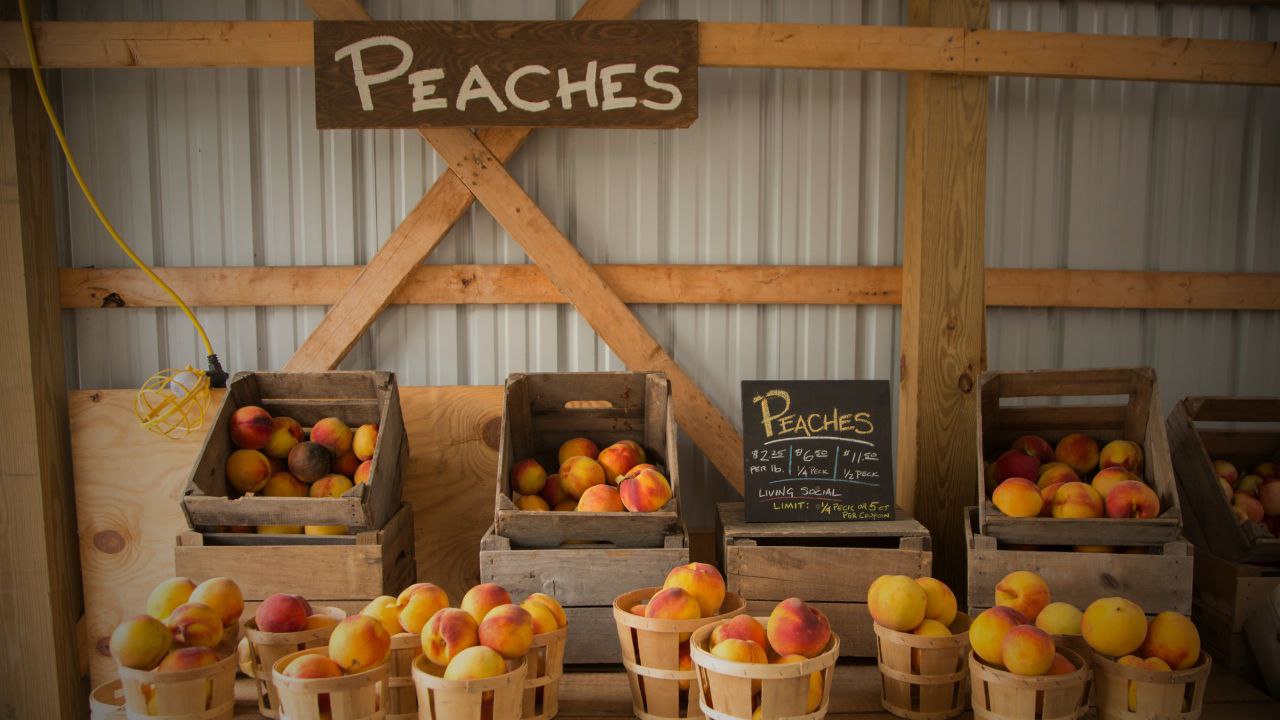
Our thriving business group hosts 3,000 members, from small solo entrepreneurs to developed companies. This week, we aim to give more exposure and introductions to the businesses of Beartaria.
We encourage the businesses of Beartaria to introduce themselves and what they do in the business group and the local state groups. We invite our community to jump into these groups to see what is going on!
This can help the wider community know that you are on the app and what you do.
As a community app that doesn’t do paid ads, lots of generic posts that just advertise your business can be a little bland.
Let’s add some value to it, here are some ideas that can help make a good introduction:
- What do you do?
- How did you get started?
- Where are you located?
- Why do you love what you do?
- What are your goals?
- How has Beartaria helped your business, whether directly or through the integration of values and practices?
- Do you have any big lessons learned through your experience that could help others?
- Let’s see some pictures or videos of your work!
We look forward to seeing all the great businesses and professionals at work in Beartaria!
Sincerely,
The Beartaria Times
If you are interested in joining our community app, you can try it out with a 7 day free trial at App.BeartariaTimes.com
Business
Former NASA Mechanic Secured To Design Classical Learner’s Elementary STEM Program
“Skills create opportunities, and we can use those skills to guide our children to become young entrepreneurs and create opportunities for themselves.”

We have received word from Brett Pike at classicallearner.com that former NASA mechanic and industrial engineer Mark Thaxton has been secured to design Classical Learner’s homeschool elementary STEM program.
Mark has vast experience as a helicopter mechanic in the Marines, a wind tunnel mechanic at NASA, and currently an industrial engineer in the truck industry.
This is big news for the growing homeschool curriculum and social network.
While Brett’s expertise in American history and entrepreneurial education has launched Classical Learner and Homeschools Connected to success, the new STEM program is set to take Classical Learner to a new level of in-depth science, technology, engineering, and math studies.
Brett told a reporter at Beartaria Times,
“We as parents can teach our children real skills for the real world from a very young age. Skills create opportunities, and we can use those skills to guide our children to become young entrepreneurs and create opportunities for themselves.”
Brett Pike
Engineer Mark Thaxton added,
“I aim to help the youth truly understand the most basic fundamental concepts used in making and designing all we do and see.
We can erase the stigma that engineering language and concepts are too abstract for anyone to learn and understand.
I want to eliminate the “magic” behind the way things work and give that “magic” names, logic, and ways to use them throughout life.
The ultimate goal of these lessons is to use basic fundamental concepts as the base of your learning castle. I sincerely hope that when learning something new and complicated in the future, our students will be able to draw a parallel to these courses, which will aid in understanding those future concepts.”
Congratulations Brett and Mark!
We are excited to see this develop and the response from Classical Learner’s growing community of homeschoolers.
@ClassicalLearner on The Beartaria Times to connect with Brett.
@Thaxton Bear on The Beartaria Times App to connect with Mark.
For a three-day free trial and to support Beartaria Times, you can sign up to Classical Learner’s Homeschools Connected platform with an affiliate link,
ClassicalLearner.com/Beartaria
Business
One Man’s Trash…
The smooth, soft feel of the flats and curves. The smell of the copper oxide on my skin and the sound of the various pieces as they fell into one another. It all intrigued me and seemed to intensify as time passed.

By: MrWhitBear
As a lifelong copperhead, I found myself wondering what I was going to do with this industrial storage tote filled to the brim with all things copper. It was a treasure trove collected from years of being a commercial plumber. From the early years of re-plumbing our family’s laundromat business with my Pop to the water conditioning business, we started together that failed. That tote had been many a mile on more adventures than anyone of us could account for. After that final attempt, we closed that tote up and packed it away.
I would open it from time to time to get something or drop something in and reminisce over pieces that brought me back to that moment and place. The jobs my wife and I worked together to make ends meet; So many pieces and parts in various states of patina.
The smooth, soft feel of the flats and curves. The smell of the copper oxide on my skin to the sound of the various pieces as they fell into one another. It all intrigued me and seemed to intensify as time passed.
We had always intended to just take it to the recycling center, and albeit nearly did when things got really lean in the last few years, (that’s another story.)
But God in his mercies had another plan
Those rosey-colored bits of beauty were called out of that dusty old tote into the light and brought back to life for another purpose that I could have never imagined.
Then one day, I realized that in my love for all things copper, I was not alone.
Imagine my surprise when listening to a Biocharisma podcast and seeing the sultan of the Gardenians light up like a kid talking about copper garden tools. My mind wandered off to that tote.
“Huh, I wonder.”
Over the years, all sorts of odd inventions were created from that box of scraps, but this was by far on another level of magnitude; could it be done?
My dad’s voice echoed through my head
“See a need fill a need, son.”
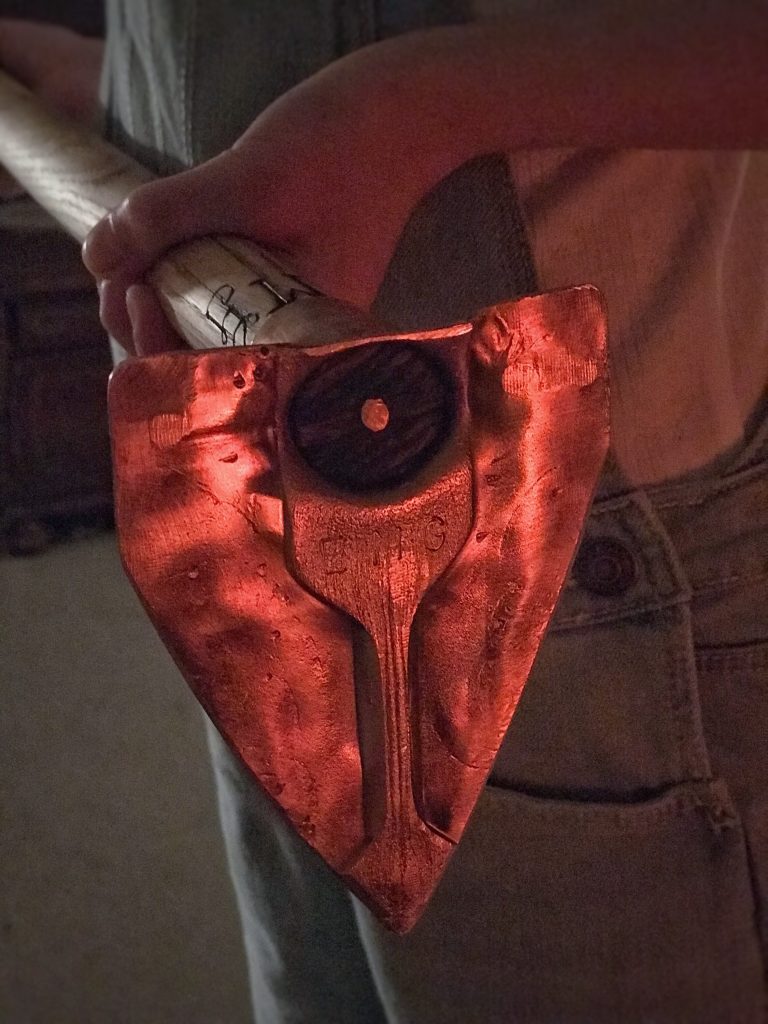
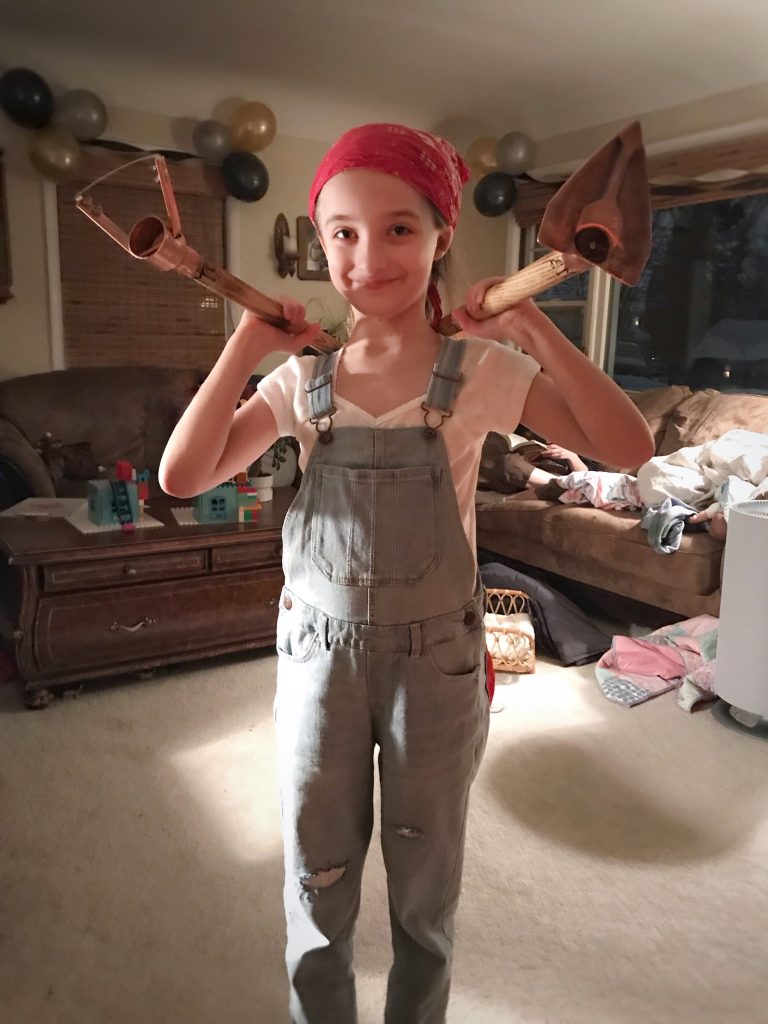


The Bears need copper tools to make their gardens flourish. Many tools were forged out of that treasure trove of leftovers, and we’ve had to buy most of this year’s supply to keep up with demand.
The first trowel had to go to Topher as a tribute to the legend for the inspiration, of course. Unfortunately, the prices of components prohibit keeping costs as low as we’ve wanted. We still keep it near cost for our Bear families, and thanks to them and the grace of God, we’ve grown in skill and productivity.


Now my hobby pays for itself, and a bit left over for the bee’s new boxes and some fresh paint this season.
Bee Alchemy helped me turn copper into liquid gold…
It was great meeting so many of you at the Festival!
God bless.
-

 Just Crushing2 weeks ago
Just Crushing2 weeks agoChristopher Gardner Completes First Dome Framing Project in Missouri: Exclusive Interview
-

 Just Crushing2 months ago
Just Crushing2 months agoBeartaria Ozark Campground Launches Community Forum!
-

 Just Crushing2 months ago
Just Crushing2 months agoMap it! – Discover Beartarians Living, Working, and Crushing Near You!
-

 Just Crushing2 months ago
Just Crushing2 months agoWhy Do We Feel So Free?
-

 Lifestyle2 months ago
Lifestyle2 months agoReconnect and Rejoice: Beartaria Times Weekly Challenge
-

 Reports2 months ago
Reports2 months agoReport: EF-1 Tornado Touches Down In The Ozarks
-

 Business2 months ago
Business2 months ago3000 Members In Our Business Group!: This Week On Our Community App!
-

 Wellness2 months ago
Wellness2 months agoBeartaria Times Member Shares History and Benefits of Haymaker’s Punch





